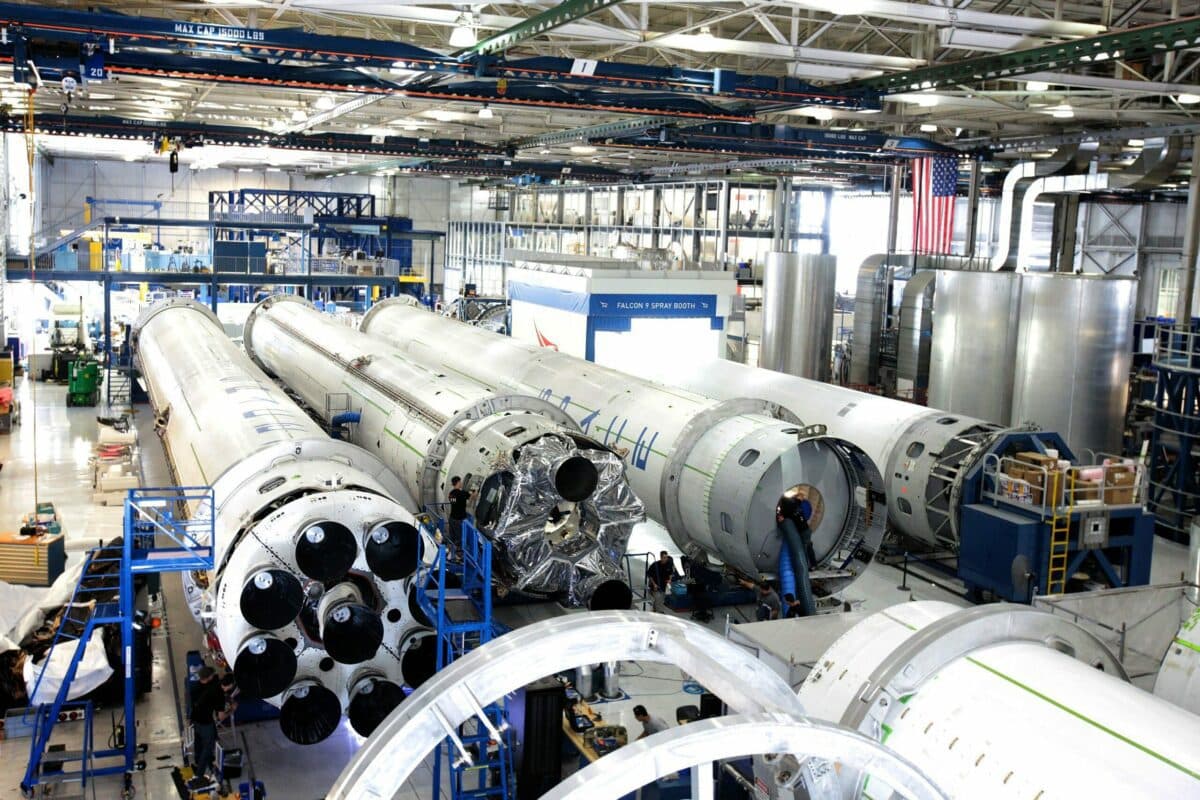What to Know about Technology and Industrial Stocks Before You Invest
By Joseph Czikk | Published on 26 Jul 2023

So, you want to start investing. But what types of stocks should you invest in?
There’s much to consider before pouring money into the stock market, but a good starting point might be to talk about two of the most popular stock types: technology and industrial stocks.
Both have upsides and downsides. Perhaps most importantly, technology stocks are generally riskier plays than industrial stocks because they’re usually more speculative.
Investing experts typically steer beginner investors away from picking individual stocks and more towards safer, lower-fee funds, like exchange-traded funds (ETFs). It is generally not advisable for beginner investors to believe they can “beat the market” and achieve success through picking individual stocks. Make sure you understand the inherent risk before doing this.
Generally speaking, tech stocks include more of the popular, exciting stocks; the ones that make headlines. On the other end of the spectrum, industrial stocks can include lots of boring, long-term plays that rise in value slowly. The opposite can be true, but here we’re speaking in generalizations.
So, if they needed a personality, tech stocks are Elon Musk and industry is Warren Buffet. Which one are you? Let’s jump into each type of stock and then compare them against each other.
What are technology stocks?
Technology stocks, generally more speculative investments, tend to fall under the growth-stock category due to their potential to grow at a rate significantly above the average growth for the market. However, this can come with overvaluation if the company has a high current share price relative to its per-share earning, covered by the Price-to-Earnings or P/E Ratio.
The problem with overvalued stocks is that the higher buying price that you ponied up could come crashing down at any minute. The higher the price, the bigger the fall. Indeed, modern tech stocks have the power to giveth and taketh away in an instant.
Tech stocks also make up some of the most expensive stocks in the world right now, including Amazon, Alphabet Inc. and Tesla. We’ll also find tech stocks among the most profitable stocks in the world. These are companies whose stock prices have risen the most between 2010 and 2020. Netflix (7371%), Nvidia (3156%), Amazon (2745%), Apple (1500%), Adobe (1538%) and AMD (1170%) all crack that list.
The point is, investors can and often do win big on tech stocks because the values, generally speaking, rise and fall with more speed and frequency than less speculative non-tech stocks.
However, you don’t have to buy an entire $500 share of Nvidia if you don’t have the cash. Most platforms, like Wealthsimple Trade, offer the ability to purchase a fractional portion of a stock, such as 10% of one share.
In fact, younger millennial and Gen Z investors have proven their affinity for tech stocks. According to Hardbacon’s investor survey, technology stocks are stealing the spotlight from financials. Among the most popular stocks that Millennial and Gen Z investors were snapping up includes technology stocks like Apple, Amazon, and Shopify.
Tech stocks are not guaranteed to go up all the time
One does not blindly invest in tech stocks and expect to make profit. Put simply, it’s really hard to pick winners. It’s even harder to compete against Wall Street firms full of quantitative analysts who understand the market much more than us mere ordinary investors. That is probably why ETFs are so popular: the average investor can leave all the details to the experts, but we’ll talk more about that later.
There does seem to be a real interest in growth stocks and stocks in newer industries, said Alexander Brown, a Behavioral Economics Professor at Texas A&M University. And it’s nice to believe that we can predict the future and pick the winners. But Brown says that a potential downside is that people tend to overvalue growth instead of value.
As it turns out, humans are not particularly good at predicting the future. Just think about all those sure things that fell through in your own experience. It may be safer covering your bases, holding index portfolios and not trying to think you’re smarter than wall street.
And there’s another variable, he says. It’s that when we pick individual stocks, we inherently compete against “a lot of very smart people out there with hedge funds who are ready to catch every opportunity.” If you’re an individual trying to do the same thing, they will probably beat you to these opportunities, said Brown.
What are industrial stocks?
Industrial stocks include some of the oldest and most well-known companies in the world. That’s because our history before and after the industrial revolution was all about producing tangible things: agriculture to eat and minerals and resources to build things with. We still need to eat, clothe ourselves and have shelter: all of these things require, in some way, industrial products and services.
Today’s industrial companies focus mostly on machinery, manufacturing and construction. Health care can also be included,although health care is now very much technological as well, The same can be said for defense and aerospace.
Well-known industrial sector Canadian companies include Canadian National Railway, Canadian Pacific Railway, aerospace company CAE and transportation and logistics firm TFI International. Well-known US companies include Lockheed Martin, Honeywell, and 3M. The industrial sector also includes agribusinesses .
Many common industrial stocks have been around for decades, making them a little easier to analyze. It’s also easier to predict how industrial stocks will behave since they’re tied to how the economy is performing. Of course, certain industries are less swayed by the economy. In fact, even in downturns, some industrial stocks still paid dividends to stockholders.
The industrial sector is home to many dividend-paying stocks. While the average dividend yield among industrial stocks can seem low, there are many across the sector that pay higher dividend yields, giving investors a way to earn income along with the growth in the stock price. In Canada, some of the best dividend stocks sport yields of between 4% and 5%.
However, some of the same things that make industrial stocks great can lead to their downfall. Since industrial stocks are heavily tied to the economy, it opens investors up to an additional level of risk. And while industrial stocks are currently benefiting from a positive political climate, that can change fast.
Industrial stock investors typically attempt to target companies with solid growth histories. Looking at aristocrat dividend stocks, those that have paid ever-increasing dividends for 25 years or more, many of those companies focus on industrials, materials, and financials. Industrial stocks might be quieter in popular media but they are the strong and silent type.
Finally, investors may also want to target companies whose success or failure isn’t married to the economy, like those that service the defense and aerospace industry. These companies are generally more shielded from the impact of negative economic conditions. There is almost always a demand for these products, as nations need to defend themselves and people need planes to travel places.
How to invest in a technology or industrial ETF
Remember how we talked about avoiding picking individual stocks? Well, there’s a way investors can still get those stocks while letting experts make the picks. We said it before: ETFs can make investing less labour intensive
ETFs can be prudent, mild-risk options for newer investors. They typically offer reasonable return expectations somewhere between 6% to 9%. These portfolios invest your cash into a broad variety of companies, mitigating your risk.
In Canada, investors can choose XEQT, the iShares Core Equity ETF Portfolio, or VEQT, the Vanguard All-Equity ETF Portfolio. The two funds are competitors that offer a similar product.
Funds like these do not just invest your money into a dozen companies. You can buy them like stocks through online brokers or robo-advisors. ETFs invest your money into literally hundreds of stocks, which naturally mitigates risk. Unlike mutual funds, which also have a basket of assets, you can trade your ETF throughout the day, just like a regular stock.
You can verify the cost of an index fund or an ETF through its expense ratio, which tells you how much of a fund’s assets are used for administrative and other operating expenses. When deciding between which fund to invest in, getting the one with the lowest cost necessarily guarantees you a better rate of return than the one with the higher cost. They’re doing the same thing, one is just charging you more to do it.
Armed with the right information, anyone can open up a trading account and learn how to invest on their own. It takes a bit of research and a willingness to continue learning, but it’s certainly not rocket science. Even if you don’t want to go full aggressive mode, you can always dip your toe in the water by investing in relatively low-risk portfolios offered by robo-advisors before graduating onto your own trading account.
